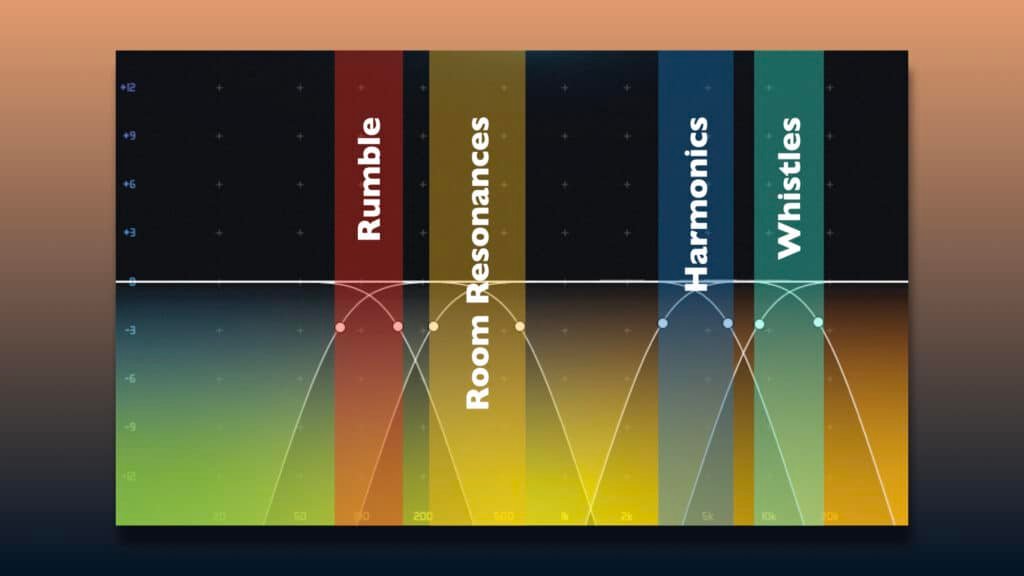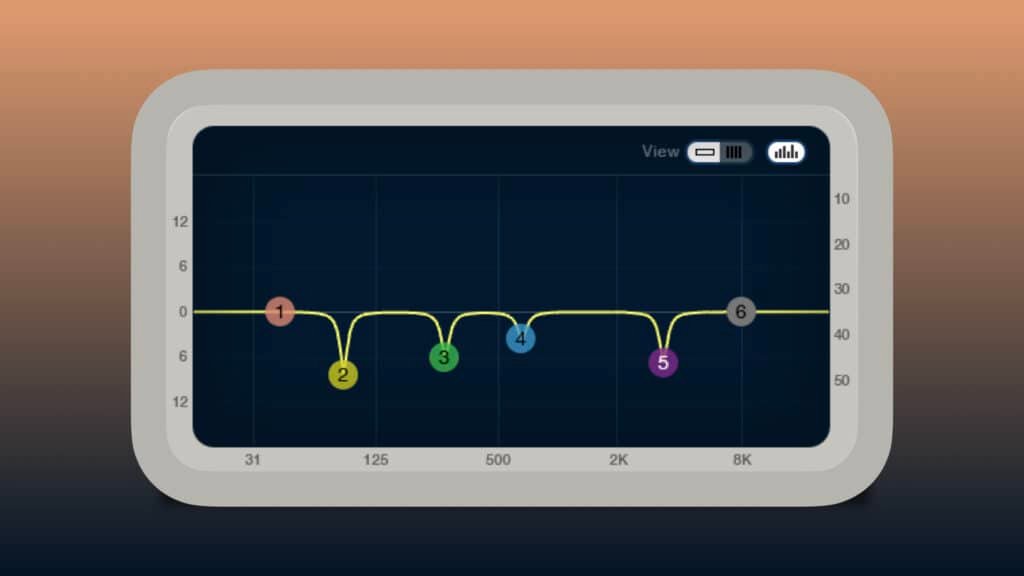Recently heard about sweeping EQ and don’t quite understand what it means? No worries. In this article we’ll explain what exactly sweeping EQ is and how you can use this mixing principle with vocal tracks. This very simple principle is used every day in the biggest studios in the world. It will allow you to fix many specific frequency problems.
Sweeping EQ is an audio mixing technique that allows, by sweeping a certain frequency range with a very fine high-gain band, to find harsh and aggressive frequencies and resonances of an audio source. This technique is very useful when you need to remove very specific frequencies without changing the overall color of the audio source.
How to use it with vocals
Now that we have the theoretical definition. Let’s take a very specific situation to understand this mixing principle.
A. Situation
Let’s say that you just recorded your own voice. All the tracks needed are in the session, and you’re now ready to mix it with the instrumental (or the rest of your band). The first thing you want to do is clean up your tracks before enhancing anything (very good decision!!).
B. Step-by-step process
- Choose a full parametric EQ (frequency + Q + gain choice)
- Listen to your vocals. Is there any frequency that hits your ears aggressively ? If yes, try to identify a frequency range where the issue happens
- Choose a band in that area. Set the Q very high (minimum 10, if possible). Push it really hard.
- You’re ready to sweep to find the frequency you were hearing!
- You found it? Now turn down that exact frequency. Job. Done.
C. Typical issues with vocals
- Around 100 Hz : In this area, there is often a very disturbing rumble that can mask the rest of the spectrum. This often happens with male voices.
- Between 150 Hz and 500 Hz : It is in this frequency range that many of the resonances of the recording room are found. The frequencies will be very pronounced if the acoustics of the room were poor during the recording.
- Between 2 kHz and 5 kHz : In a human voice, this area is filled with harmonics, some of which can be too aggressive for the ear.
- Between 8 kHz and 16 kHz : This is the sibilance zone. It often happens that whistling sounds appear at very specific frequencies.

Obviously, these are only theoretical values. The recording room, the microphone, the preamp and the singer him/herself are elements that will vary the way you treat the voice.
Conclusion
EQ sweeping is one of the most useful mixing techniques to know. With a simple frequency sweep, you can see how many harmonics, resonances and bad frequencies are floating around in a vocal recording. But… Don’t overdo it!
In fact, when you read the definition, it sounds like a magic recipe that makes all your audio tracks super clean. It doesn’t. In reality, it’s only a tiny fraction of what vocal EQ is. But it is certain that when you master this technique, you get rid of a lot of frequency problems that are impossible to treat otherwise. You’re on the right road to pro voices!
Make sure to contact me if you have any questions about that topic or anything in the mixing field. I’m always happy to help!







